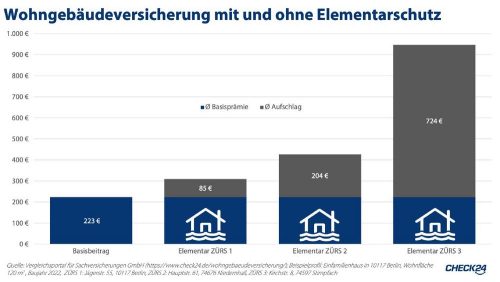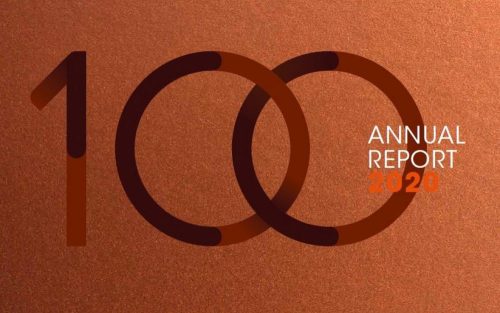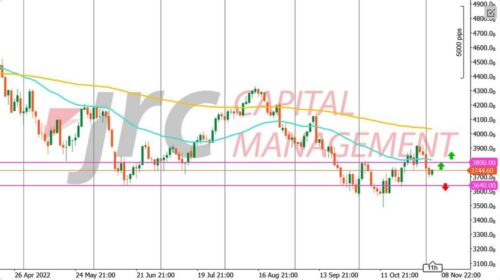Schaeffler closes 2020 with strong fourth quarter
- Schaeffler Group weathers crisis well despite constant currency revenue decline of 10.4 percent
- Diversification with three divisions and four regions drives operating earnings (EBIT margin before special items at 6.4 percent; prior year: 8.1 percent)
- Free cash flow before cash in- and outflows for M&A activities of 539 million euros ahead of prior year (prior year: 473 million euros)
- Proposed dividend of 25 cents per common non-voting share
- Guidance based on cautious market assessment
Global automotive and industrial supplier Schaeffler presented its results for 2020 today. The global coronavirus pandemic resulted in a significant revenue decline. The Schaeffler Group’s revenue amounted to approximately 12.6 billion euros (prior year: approximately 14.4 billion euros). At constant currency, revenue was down 10.4 percent. All divisions were affected by the decrease. However, the second half of the year, and especially the fourth quarter, improved noticeably over the first six months with all three divisions contributing. Of the four regions, China recovered most rapidly, closing the year with 8.7 percent in additional revenue at constant currency. In the Americas, Europe, and Asia/Pacific regions, revenue declined.
Earnings before financial result, income (loss) from equity-method investees, and income taxes (EBIT) were adversely affected by 946 million euros in special items (prior year: 372 million euros). Special items related primarily to the expansion of the transformation and efficiency programs RACE (Automotive Technologies), GRIP (Automotive Aftermarket), and FIT (Industrial) established in 2019 as well as an impairment of goodwill allocated to the Automotive Technologies division, and resulted in EBIT of ‑143 million euros (prior year: 790 million euros).
Despite the decrease in revenue, the company’s EBIT margin before special items amounted to 6.4 percent (prior year: 8.1 percent), demonstrating that the measures initiated under the divisional programs are making an impact. Following a weak first six months with an EBIT margin of 1.2 percent, the EBIT margin improved to 10.5 percent in the second half of the year and was ahead of the prior year (8.4 percent) as well.
The net loss attributable to shareholders of the parent company for the reporting period was 424 million euros following net income of 428 in the prior year. Earnings per common non-voting share were ‑0.63 euros (prior year: 0.65 euros).
Before special items, net income attributable to shareholders of the parent company was 325 million euros (prior year: 686 million euros). On that basis, Schaeffler AG’s Board of Managing Directors will propose a dividend of 25 cents per common non-voting share (prior year: 45 cents) to the annual general meeting. This represents a dividend payout ratio of approximately 50 percent (prior year: approximately 43 percent) of net income before special items attributable to shareholders.
Strong E-Mobility order intake in Automotive Technologies
The Automotive Technologies division generated 7,821 million euros in revenue (prior year: 9,044 million euros). At constant currency, revenue decreased by 11.6 percent from the prior year. In an already declining market environment, the division’s revenue trend was massively impacted by the implications of the coronavirus pandemic. Global automobile production fell by approximately 16 percent, and Schaeffler did not escape this negative trend. However, revenue for the second half of the year grew and exceeded the prior year period by 3.5 percent. In total, the Automotive Technologies division outperformed the market by more than 4 percentage points. The Automotive Technologies division generated order intake of 10.2 billion euros. 2.7 billion euros of these orders related to the E-Mobility business division, significantly above the target of 1.5 to 2 billion euros.
The significant decline in global automobile production reduced revenue for three of the four regions. The Europe region was affected particularly severely; revenue there was down 19.7 percent at constant currency. The Americas region reported 13.7 percent less revenue at constant currency. In the Greater China region, revenue was up 5.8 percent at constant currency. In the Asia/Pacific region, revenue fell by 13.2 percent at constant currency.
EBIT before special items decreased by 44 percent to 278 million euros (prior year: 496 million euros). The division’s EBIT margin before special items declined to 3.6 percent (prior year: 5.5 percent). Before special items, the EBIT margin for the second half of the year of 10.0 percent improved considerably over both the first six months (‑5.5 percent) and the corresponding prior year period (6.1 percent).
Automotive Aftermarket with strong margin despite revenue decline
The Automotive Aftermarket division also experienced a revenue decline in 2020. Revenue fell to 1,641 million euros (prior year: 1,848 million euros) driven by volumes. This represents a constant-currency decrease of 7.0 percent. Revenue decreased in all regions, although trends improved everywhere in the second half of the year.
In the Europe region, revenue fell by 7.8 percent at constant currency. The Americas region reported 4.3 percent less revenue at constant currency. The constant currency decline in the Greater China region of 1.9 percent was more moderate. In the Asia/Pacific region, revenue was down 12.3 percent at constant currency.
EBIT before special items amounted to 259 million euros (prior year: 305 million euros), falling by 15.1 percent. Despite the considerable revenue decline, cost adjustments improved the division’s EBIT margin before special items for the second half of the year compared to the first six months, returning it to the level of the prior year period of 17.4 percent. The EBIT margin before special items for 2020 amounted to 15.8 percent (prior year: 16.5 percent).
Industrial division generates significant additional revenue in the wind sector cluster
The Industrial division reported 3,138 million euros in revenue (prior year: 3,535 million euros), a decline of ‑9.2 percent at constant currency. Trends varied across sectors. The wind sector cluster, for instance, generated noticeable revenue growth, with contributions especially from the Greater China region. However, this growth was insufficient to fully offset the heavy decline in demand worldwide.
In the Europe region, revenue fell by ‑18.4 percent at constant currency due to lower demand in most sector clusters, especially in most sectors of the industrial automation cluster. The business with distributors (Industrial Distribution) was marked by the reduced demand for service and a corresponding reduction in inventory levels. The Americas region experienced a considerable decrease in revenue of ‑13.5 percent at constant currency, held back by the decline reported by Industrial Distribution and the raw materials and aerospace sector clusters. The Greater China region increased its revenue for the year by 18.1 percent at constant currency mainly due to the encouraging performance of the wind and power transmission sector clusters. In the Asia/Pacific region, revenue fell ‑13.6 percent at constant currency short of the prior year level. The decline was mainly attributable to Industrial Distribution and the two wheelers sector cluster. However, the revenue trend improved considerably in both these areas in the second half of 2020.
EBIT before special items decreased by 26.3 percent to 266 million euros (prior year: 361 million euros). The division’s EBIT margin before special items declined by 1.7 percentage points to 8.5 percent (prior year: 10.2 percent).
Free cash flow ahead of prior year
At 539 million euros (prior year: 473 million euros), the Schaeffler Group’s free cash flow before cash in- and outflows for M&A activities was positive and fell into the range of approximately 500 to 600 million euros called for by the adjusted guidance issued November 9, 2020. Capital expenditures (capex) on property, plant and equipment and intangible assets for the reporting period of 632 million euros decreased to below the prior year level (1,045 million euros). This represents a capex ratio of 5.0 percent (prior year: 7.2 percent). The reinvestment rate amounted to 0.67 (prior year: 1.01).
The group’s net financial debt amounted to 2,312 million euros as at December 31, 2020 (December 31, 2019: 2,526 million euros). The related gearing ratio, i.e. the ratio of net financial debt to shareholders’ equity, rose to 125.8 percent (December 31, 2019: 86.6 percent). The Schaeffler Group, whose total assets increased to approximately 13.2 billion euros as at December 31, 2020 (prior year: approximately 12.9 billion euros), employed a workforce of 83,297 as at that date (prior year: 87,748), a reduction of approximately 5.1 percent.
Guidance for 2021 based on cautious market assessment
The Schaeffler Group expects its revenue to grow considerably in 2021, rising by more than 7 percent at constant currency. The lower limit is based on a conservative assessment of the market in terms of global growth in the production of passenger cars and light commercial vehicles. In addition, the company expects to generate an EBIT margin before special items of 6 to 8 percent in 2021. The Schaeffler Group also anticipates free cash flow before cash in- and outflows for M&A activities for 2021 to amount to approximately 100 million euros. This expectation reflects a volume-driven increase in working capital, normalization of capital expenditures, and higher restructuring expenditures compared to the prior year.
The group anticipates that its Automotive Technologies division will grow by 2 to 5 percentage points more than global automobile production of passenger cars and light commercial vehicles. On that basis, the company expects the Automotive Technologies division to generate revenue growth that is considerably positive at constant currency, and to slightly improve its EBIT margin before special items over the prior year by raising it to more than 4.5 percent.
For the Automotive Aftermarket division, the group anticipates constant currency revenue growth of 5 to 7 percent and an EBIT margin before special items slightly lower than in the prior year at more than 11.5 percent in 2021. This expectation reflects higher product expenses, a temporary increase in logistics expenses related to the assembly and packaging center in Halle (Saale) commencing operations, expenses for digitalization, and an adverse impact of currency translation.
Given the range of estimates Oxford Economics and others have made regarding growth in global industrial production, the company expects its Industrial division to generate revenue growth of 4 to 6 percent at constant currency and an EBIT margin before special items in the high single-digits above 8.5 percent in 2021.
Dr. Klaus Patzak, CFO of Schaeffler AG, said: “We are confidently looking ahead to the coming year and anticipate relatively robust growth for our markets. However, the economic environment remains challenging in times of the pandemic, and we do not expect to reach pre-crisis levels until after 2022. Our guidance reflects that.”
Roadmap 2025 kicked off and execution started
On November 18, 2020, the Schaeffler Group presented its Roadmap 2025 at its 2020 Capital Markets Day. The Roadmap 2025 updates Schaeffler’s corporate strategy to 2025, sets out a program for its execution, and includes a set of mid-term targets. The Roadmap 2025 shows the way forward. It stands for continuity and expanding the company’s strengths, but also for improving and advancing with respect to new technologies and business models as well as costs and efficiency. Meanwhile, the new corporate claim, “We pioneer motion”, expresses Schaeffler’s commitment to continuing to shape motion and progress by being a diversified automotive and industrial supplier with a global reach. This will require even more effective use of the synergies available within the Schaeffler Group. The company’s success will continue to be based on its four proven key differentiators of innovation, superior quality, system understanding, and manufacturing excellence.
“The year 2020 was marked by great uncertainties that still persist today. Once again, our positioning as an automotive and industrial supplier operating worldwide has proven to serve us well in difficult times and has helped us weather the crisis relatively well,” stated Klaus Rosenfeld, CEO of Schaeffler AG. “We used the year of crisis to hone our strategy and orient it toward current challenges and opportunities as part of the Roadmap 2025. Our main focus is now on consistently executing the Roadmap 2025.”
You can find our annual report at: www.schaeffler-annual-report.com
Forward-looking statements and projections
Certain statements in this press release are forward-looking statements. By their nature, forward-looking statements involve a number of risks, uncertainties and assumptions that could cause actual results or events to differ materially from those expressed or implied by the forward-looking statements. These risks, uncertainties and assumptions could adversely affect the outcome and financial consequences of the plans and events described herein. No one undertakes any obligation to publicly update or revise any forward-looking statement, whether as a result of new information, future events or otherwise. You should not place any undue reliance on forward-looking statements which speak only as of the date of this press release. Statements contained in this press release regarding past trends or events should not be taken as representation that such trends or events will continue in the future. The cautionary statements set out above should be considered in connection with any subsequent written or oral forward-looking statements that Schaeffler, or persons acting on its behalf, may issue.
Schaeffler Group – We pioneer motion
As a leading global supplier to the automotive and industrial sectors, the Schaeffler Group has been driving forward groundbreaking inventions and developments in the fields of motion and mobility for over 70 years. With innovative technologies, products, and services for CO₂-efficient drives, electric mobility, Industry 4.0, digitalization, and renewable energies, the company is a reliable partner for making motion and mobility more efficient, intelligent, and sustainable. The technology company manufactures high-precision components and systems for powertrain and chassis applications as well as rolling and plain bearing solutions for a large number of industrial applications. The Schaeffler Group generated sales of approximately EUR 12.6 billion in 2020. With around 83,300 employees, Schaeffler is one of the world’s largest family companies. With almost 2,400 patent applications in 2019, Schaeffler is Germany’s second most innovative company according to the DPMA (German Patent and Trademark Office).
Schaeffler AG
Industriestraße 1-3
91074 Herzogenaurach
Telefon: +49 (9132) 82-0
Telefax: +49 (9132) 82-3584
http://www.schaeffler-group.com
Leiter Finanzkommunikation und Öffentlichkeitsarbeit
Telefon: +49 (9132) 825000
E-Mail: presse@schaeffler.com
Leiterin Investor Relations
Telefon: +49 (9132) 82-4440
E-Mail: ir@schaeffler.com
Investor Relations
Telefon: +49 (9132) 82-4440
E-Mail: ir@schaeffler.com
Leiterin Unternehmenskommunikation
Telefon: +49 (9132) 82-40676
E-Mail: bettina.lichtenberg@schaeffler.com
![]()



